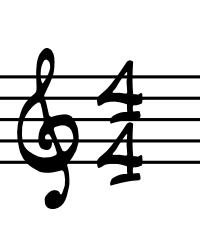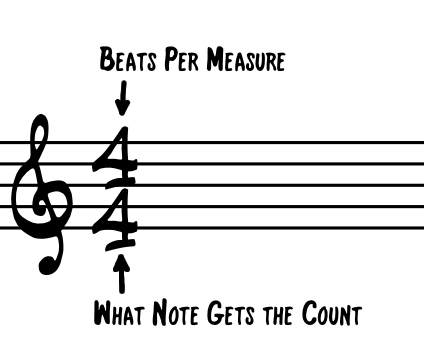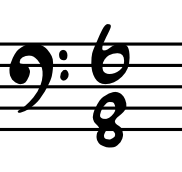Time Signatures and Measures
The phrase "time waits for no one" is certainly true when it comes to music. Many players tend to focus on playing the right note but they don't worry so much about when to play that note. Good rhythm and timing in music is one of the most important things you can do to become a better than average player. The time signature of a song is your guide to mastering the rhythmic aspect of music.
Time Signature Symbol
On staff notation the time signature follows the clef and the key symbols. If the key of the song is C where there's no sharps or flats then you'll typically see the time signature immediately after the clef symbol. Time signatures consist of two numbers. A top number and a bottom number.Below is an example of a 4/4 time signature on a treble clef staff in the key of C.

Understanding Time Signature Numbers
Time Signatures tell the musician two things. How many beats there are per measure and what rhythmic note value gets counted as the beat. The top number represents the beats per measure. I explain what a measure is down below but for now think of this number as a consistent beat or tap that you can count over and over. So for a 4/4 time signature the top number is 4. To count the time of the song you can say: 1, 2, 3, 4, 1, 2, 3, 4, etc.
The bottom number of the time signature tells you what note value gets the count. The easiest way to think of this is to treat the bottom number as the denominator of a fraction. So if the bottom number is a 4 you give the 1/4 or quarter note the count. If it's an 8 you give the 1/8 or eighth note the count.
Here's the basic 4/4 time signature again. Hopefully the numbers are making sense. 4 beats per measure with the quarter note getting the count.

Here's 3/4 time signature. 3 beats per measure with the quarter note getting the count.


Measures
Measures in music simply break up the song's time into small manageable chunks. When you take the information from the time signature and apply it to a measure you get a small slice of the music over it's timeline. Most songs change chords every measure and you can typically hear the drum beat recycle every measure. The measure is the actual musical representation of the time signature.
Measures are identified by bar lines. These are vertical lines through the staff. The space between two bar lines is the measure. In this 4/4 example below you can see two measures. Each measure has 4 beats in it and they are separated by bar lines.
